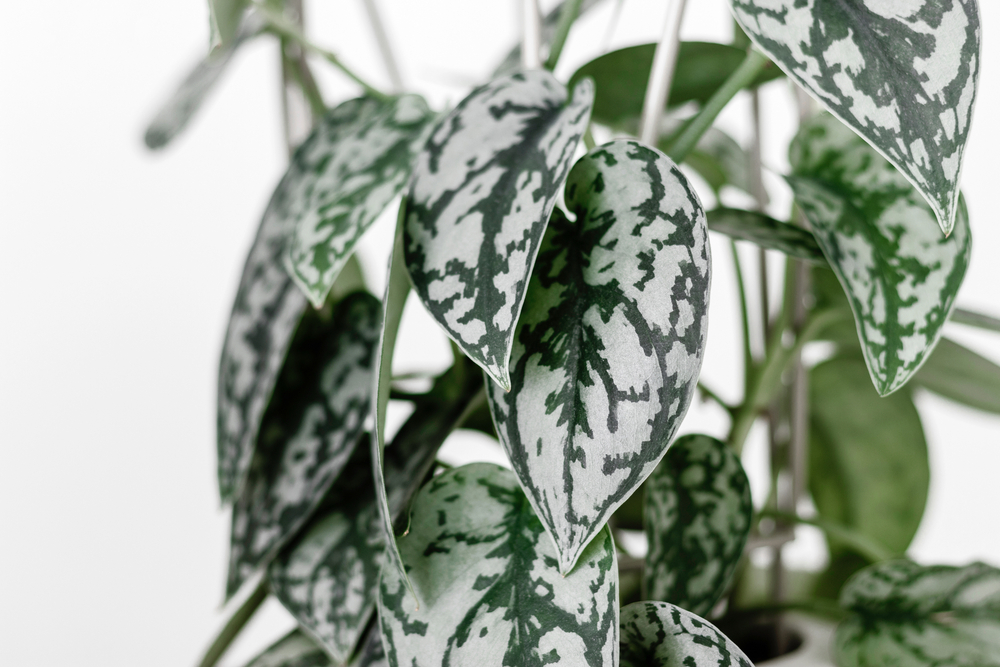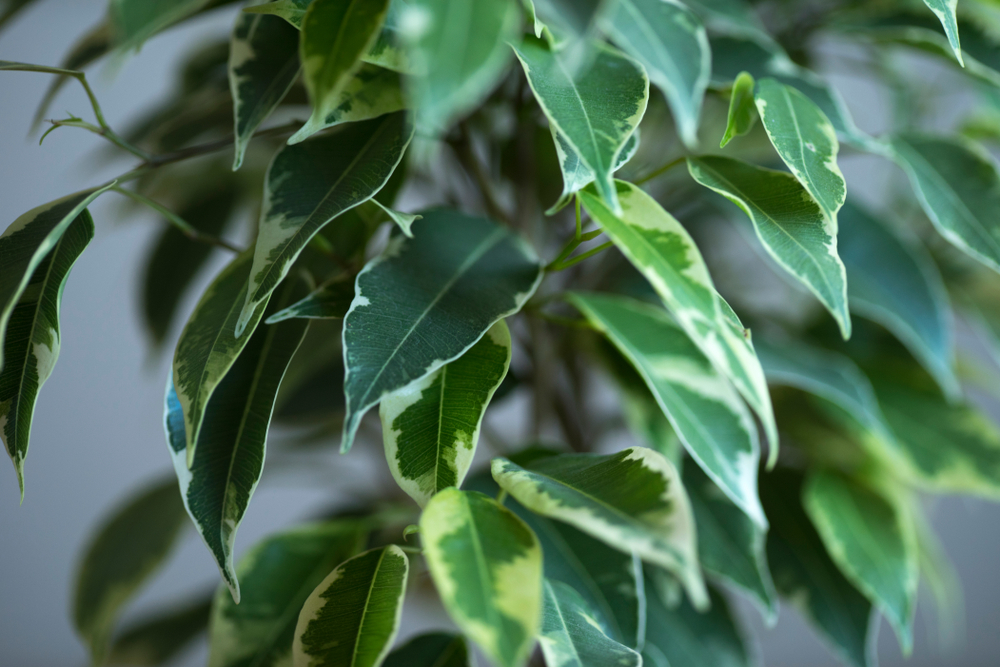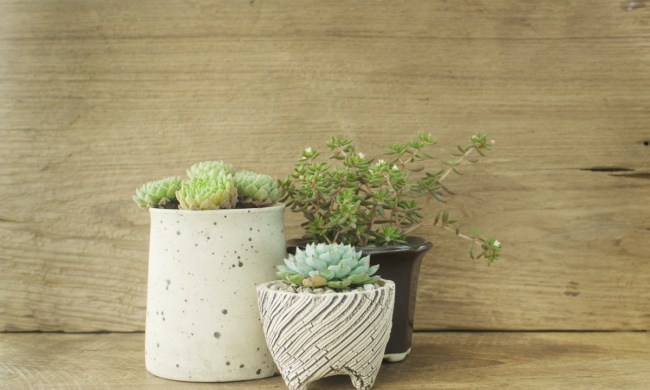It can be challenging to find the perfect plant for that dark corner of your home. Most plants need bright indirect light and will die in that corner! So what plants do well indoors in low light? It’s essential to be clear that very few plants actually want to live in low-light conditions. However, the plants on this list can survive it.
Remember that most of them would do better if provided with a bit more light. You might also be asking, “What is the easiest indoor plant to keep alive?” Well, these aren’t only low-light tolerant plants, but they are also perfect for beginners!
1. Pothos
It’s a well-known fact among the houseplant community that pothos are the easiest plants to care for and are almost impossible to kill, which makes them easy houseplants for low light. A pothos can survive neglect, drought, and low-light situations. Its durability makes it ideal for beginners and that corner of your home that needs a bit of life but doesn’t have much light to offer.
Pothos are low-light-loving tropical vining plants and come in a few varieties, so you can find the type that best suits your aesthetics or preferences. Water your pothos when the top portion of the soil dries out, feed it during the spring and summer, and rotate it every week to ensure it grows evenly.
2. Silver satin
This cousin to the pothos is just as beautiful and easy to care for, even in low light! Also known as Scindapsus pictus, the silver satin features medium green leaves with spots of silvery variegation. It grows in vines and can get up to 10 feet in length, even indoors.
Train these vines to grow along a wall or hang them down from a tall cabinet and you’ll bring a lovely sense of life to your indoor space. You can even put the silver satin in a darker corner, and it will adapt. Water it once the soil dries out, and be sure to fertilize it once a month during the growing season.
3. Cast iron plant
The cast iron plant, or Aspidistra elatior, is nearly indestructible and perfect for beginners. It has long and slender leaves that reach up as they grow and then gracefully flop over as they mature. The leaves are a dark and rich green color that adds a beautiful element to any space.
Put your cast iron plant in one of your dark corners and it will survive. This is also a low-maintenance plant and won’t die if you forget to feed it for a while. The cast iron plant can grow up to 3 feet tall and you must water it once the top portion of the soil is dry.
4. Bamboo
Bring some luck into your life with a stunning bamboo plant. While this plant needs more light than other plants on this list, it can still survive low-light conditions. Since it needs moist soil, it’s perfect for the bathroom, but it could also work as a desk plant and survive only on artificial light.
A bamboo plant can grow up to 3 feet tall and must be watered more often to ensure the soil doesn’t completely dry out. Besides keeping the soil moist and providing a bit more light, it’s easy to care for and a pretty durable plant.
5. Sago palm
Although it’s in its name, the sago palm is not technically a palm but a cycad. It has long green fronds that grow just like palm trees, but they are shorter and much cuter than their taller palm cousins. You might never think about a palm doing well in low light, but this little guy is perfect for the shady corner you’re looking to fill.
In addition, it’s easy to care for and will bring a bit of a tropical vibe to your space. When mature, it can be up to 3 feet tall. While the sago palm can survive a drought, it prefers to keep its soil a bit moister and would enjoy a good feeding once a month during the growing season.
6. Chinese evergreen
Deemed one of the most durable indoor plants, the Chinese evergreen is an attractive plant that does well in low-light situations. It is also super easy to care for and excellent for beginner plant lovers. The Chinese evergreen can grow up to 2 feet tall and prefers well-draining soil.
You’ll want to water it once the top portion of the soil is dry, but be sure the soil doesn’t completely dry out. You’ll also want to keep it away from dogs and cats, as this plant is toxic to both.
7. Weeping fig tree
You won’t be weeping when you bring this lovely plant into your home. The weeping fig tree is a fast-growing plant and it might need a little pruning here and there. Other than that, it’s an easy-to-care-for little tree that will look great in your shady corner.
Its slender branches arch out elegantly and produce adorable variegated leaves that bring a beautiful aesthetic to any home. It can grow up to 6 feet tall and will want almost constantly moist soil. Keep your weeping fig tree from drying out and away from vents or drafty doors, and you’ll be rewarded with a gorgeous tree right in your home.
Not all of us are blessed with bright homes that have plenty of natural light to spare. So for those dark corners or for the bathroom where it’s humid and dark, these plants might be the perfect solution for you! Especially if you’re a beginner, these easy maintenance plants that’ll reward you with beautiful greenery.




